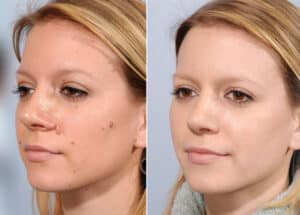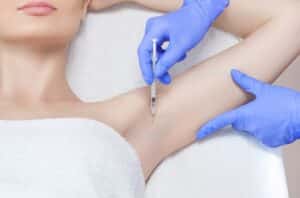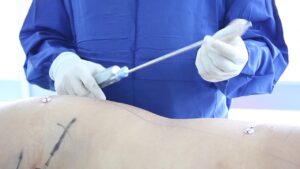Navigating the financial aspect of breast reconstruction surgery, including postoperative costs, cost analyses, total costs, and cost information, can feel overwhelming, but knowing what to expect makes the journey smoother. Historically, the total costs, including postoperative costs and variable costs, have varied widely, influenced by factors like geographical location, surgical techniques, median costs, and individual patient needs. Today’s landscape offers more options than ever, yet brings complexities in insurance coverage, out-of-pocket expenses, payments, total costs, and impacts on patient outcomes due to payment reforms. This post aims to demystify the costs and payments associated with breast reconstruction surgery, providing clarity on the impact of surgical care and empowering you with information to make informed decisions about your health, recovery, and the procedure.
Understanding Breast Reconstruction Costs
Immediate vs. Delayed
Breast reconstruction surgery can be immediate or delayed. Immediate reconstruction happens during the same operation as mastectomy. Delayed reconstruction occurs months or years later. Immediate procedures often cost less overall. This is because they require fewer surgeries.
Delayed reconstruction might involve more visits to the surgeon. It can lead to higher costs over time.
Surgical Technique
The technique used in breast reconstruction at the surgery center impacts the total costs, including postoperative costs and potential revisions, significantly. Options like flap procedures use your own tissue. They are often more expensive than inserting a permanent breast implant, considering postoperative costs, total costs, and cost analyses for women. Flap surgeries require longer operation times and skilled surgeons.
Permanent breast implants, while initially less costly, may need replacement over time, leading to higher postoperative costs, total costs, and potential payments for major complications.
Geographic Location
Where you have your surgery, whether in a hospital or another setting, plays a crucial role in determining costs, payments, and the risk of major complications based on procedure type. Prices vary widely between countries and even within regions of the same country. Urban areas usually have higher fees than rural ones.
Insurance coverage differs by location too. It’s vital to check what your policy covers.
Factors Affecting Surgery Costs
Surgeon’s Expertise
The experience and reputation of a surgeon play a crucial role in determining the cost of breast reconstruction surgery for women, including payments over a period of a year. Highly regarded surgeons often charge more due to their expertise, potentially leading to better outcomes and lower complication rates.
Surgeons with extensive experience might offer advanced techniques that can reduce recovery time. However, their fees, bundling payment over a period of a year, reflect their skill level and success rates.
Procedure Type
The choice between autologous tissue reconstruction and implant-based reconstruction significantly impacts the overall cost, considering comorbidities, bundling, payment period. Autologous procedures, which use tissue from another part of the patient’s body, are generally more expensive than those using implants.
This is due to the complexity and length of autologous surgery. It requires meticulous work and longer operating times, increasing surgical costs.
Complexity Factors
Several factors can affect the complexity and duration of breast reconstruction surgery for women, thereby altering its cost and payment options. These include the patient’s age, health status, and whether they have undergone previous surgeries in the area.
Complex surgeries demand more resources, including time in the operating room and specialized equipment. They may also lead to higher post-operative care costs due to increased monitoring for complications.
Typical Expenses Overview
Hospital Stays
Hospital stays significantly impact total costs. Patients often overlook this factor. A single night can add thousands to the bill. The length of stay varies per individual, affecting the adjusted difference in expenses.
Insurance may cover some of this. Yet, out-of-pocket costs remain high for many.
Anesthesia Fees
Anesthesia is crucial for comfort during surgery. Its fees depend on surgery length and complexity. These costs add up quickly, making a notable portion of the variable costs.
Patients should ask their surgeon about these fees beforehand.
Surgical Fees
Surgeons charge based on their expertise and the surgery’s complexity. High demand and specialized skills mean higher fees. This forms a large chunk of the total costs.
Discussing payment options with your surgeon can provide clarity.
Additional Costs
Post-surgery garments and physical therapy are often necessary for women’s recovery. They represent additional expenses not always considered initially.
Unforeseen expenses, like complications or follow-up surgeries, can inflate the bill unexpectedly.
Patients should prepare for these possibilities to manage their finances better.
Insurance Coverage Importance
Policy Variability
Insurance coverage for breast reconstruction after a mastectomy can vary greatly among providers. It’s crucial to dive deep into your policy details. Some plans might cover the entire cost, while others only cover a portion.
The variability can be confusing. Patients often find themselves navigating a maze of terms and conditions. It’s essential to understand exactly what your insurance offers.
Pre-Approval Necessity
Before undergoing surgery, obtaining pre-approval from your insurance is often required. This step is critical.
Without pre-approval, you might face unexpected bills. Always check with your health insurance provider before scheduling any procedures. They will inform you about necessary documentation and approval processes.
Complication Coverage
Understanding coverage for potential complications or revision surgeries is also important. Not all policies are the same in this regard.
e insurers provide comprehensive coverage that includes post-surgery complications and revisions, while others do not. Checking this aspect of your policy ensures you’re prepared for any scenario.
Financial Assistance Options
Grants Programs
Grants and programs exist for those without insurance or underinsured. Many organizations offer financial help specifically for breast reconstruction surgery. They cover a range of services, including outpatient care and additional treatments like chemotherapy.
Patients should research available grants. These can significantly reduce the financial burden.
Hospital Counselors
Consulting with a hospital’s financial counselor is highly recommended. They can guide patients through alternative payment models. This might include structured payment periods or discounts on the fee for services.
Hospitals often have policies to assist patients financially. It’s crucial to ask about these options early in the treatment planning process.
Nonprofit Support
Numerous nonprofit organizations support breast cancer survivors financially. They understand the challenges of managing treatment costs, including surgeries and therapies.
Researching these organizations can uncover valuable resources. Some offer direct assistance, while others provide information on navigating payment reforms and securing funds.
Cost Analysis After Mastectomy
Long-Term Costs
The financial implications of living with a mastectomy versus opting for breast reconstruction reveal a complex picture. Initially, the cost of reconstruction might seem daunting. However, when considering long-term expenses, such as prosthetics and specialized garments, the scales may tip. These items require regular replacement and can accumulate significant costs over time.
Moreover, some women experience physical complications post-mastectomy, like lymphedema, which necessitates ongoing medical care. This care adds to the overall financial burden.
Psychological Benefits
Breast reconstruction offers notable psychological and physical benefits that can offset initial costs. For many, the procedure is more than cosmetic—it’s a crucial step in healing after cancer. Reconstruction can help restore body image and self-esteem, leading to improved mental health.
These benefits often translate into reduced spending on mental health services and an increased ability to return to work or engage in social activities. The value of these outcomes cannot be underestimated in a comprehensive cost analysis.
Quality of Life
Ultimately, the impact on quality of life and self-image plays a pivotal role in the cost-benefit analysis of breast reconstruction. Women who choose reconstruction frequently report higher satisfaction with their bodies and an enhanced quality of life.
This improvement is not just emotional but also practical. Feeling comfortable in one’s skin again can reduce the need for additional surgeries or treatments aimed at addressing psychological distress stemming from altered body image.

Evaluating Surgery Costs
Consult Comparisons
Seeking multiple consultations is crucial. It allows for a comprehensive comparison of costs and surgical approaches. Each surgeon at a surgery center or hospital might offer different insights into the procedure, including preoperative angiography or the potential need for unplanned procedures.
Patients should not hesitate to ask each surgeon about their experience with breast reconstruction surgery. They should also inquire about postoperative costs that may arise. This ensures a clearer understanding of the total financial commitment.
Itemized Estimates
Understanding all potential charges requires asking for itemized estimates. These estimates break down every cost involved, from the initial consultation at the outpatient hospital to any necessary cancer treatment follow-ups at places like Gung Memorial Hospital.
Itemized estimates help patients avoid unexpected expenses. They detail everything from the cost of surgical care to median costs associated with specific plastic surgery procedures.
Experience vs. Cost
While evaluating costs, considering the surgeon’s experience and patient satisfaction is vital. A more experienced surgeon might charge more, but they often bring better outcomes and lower risks of complications.
Patient reviews and satisfaction ratings can offer insights into what one can expect in terms of care quality and support throughout the process.
Key Points for Discussion
Surgeon Choice
Choosing a surgeon should not solely hinge on cost. Expertise and experience significantly affect clinical outcomes. Patients must research their surgeon’s track record, focusing on patient outcomes and the frequency of major complications or revisions.
It’s vital to have a detailed consultation. This allows understanding of what procedures may entail, including potential episodes requiring additional tests or exchange surgeries.
Financial Concerns
Discussing financial worries with healthcare providers is crucial. Many are willing to explore payment models or provide information on insurance coverage. They can also discuss the long-term value of different reconstruction options, considering both initial costs and potential future expenses from complications or revisions.
Post-Surgery Support
The role of post-surgery care cannot be overstated. Adequate support and follow-up care greatly impact satisfaction scores and overall results. This includes monitoring for any complications and addressing them promptly to avoid further issues.
Final Remarks
Understanding the costs associated with breast reconstruction surgery is crucial for making informed decisions. You’ve seen how various factors influence the overall expenses and the significance of insurance and financial assistance in managing these costs. It’s not just about the numbers; it’s about ensuring you have the support and information needed to navigate this journey with confidence. Remember, evaluating surgery costs goes beyond the initial price tag—it’s about considering the value it brings to your life.
Now’s the time to take action. Reach out to professionals, discuss with your insurance provider, and explore financial aid options available to you. Armed with knowledge, you’re better equipped to make choices that align with your needs and budget. Let this be your stepping stone towards a decision that enhances your well-being and peace of mind. Your journey to recovery is unique; ensure it’s also informed.
Frequently Asked Questions
What factors influence the cost of breast reconstruction surgery?
The cost of breast reconstruction surgery can vary widely based on several factors including the type of reconstruction, surgeon’s fees, facility costs, and geographical location. Each element plays a crucial role in the overall expense.
How much does breast reconstruction surgery typically cost?
Breast reconstruction surgery costs can range significantly, but on average, expenses might fall between $15,000 and $25,000. This range includes surgeon’s fees, anesthesia, and hospital stay but varies by procedure type and location.
Is breast reconstruction covered by insurance?
Yes, most insurance plans cover breast reconstruction surgery following mastectomy due to the Women’s Health and Cancer Rights Act of 1998. It’s important to check with your insurance provider for specific coverage details.
Are there financial assistance options available for breast reconstruction?
Indeed, there are financial assistance programs available to help cover the costs of breast reconstruction. These may include grants from nonprofit organizations or payment plans offered through healthcare providers.
How should I evaluate the costs of my breast reconstruction surgery?
Evaluating the costs involves considering all aspects of the procedure including pre- and post-operative care, surgeon’s expertise, facility quality, and potential long-term benefits versus non-reconstruction options. Consulting with multiple surgeons can also provide a clearer picture of expected expenses.
What should be discussed regarding surgery costs during my consultation?
During your consultation, discuss all cost-related aspects including the surgeon’s fee, facility charges, anesthesia fees, expected out-of-pocket expenses for any non-covered services, and options for financial assistance or payment plans. Transparency about costs upfront can help avoid unexpected expenses later on.











